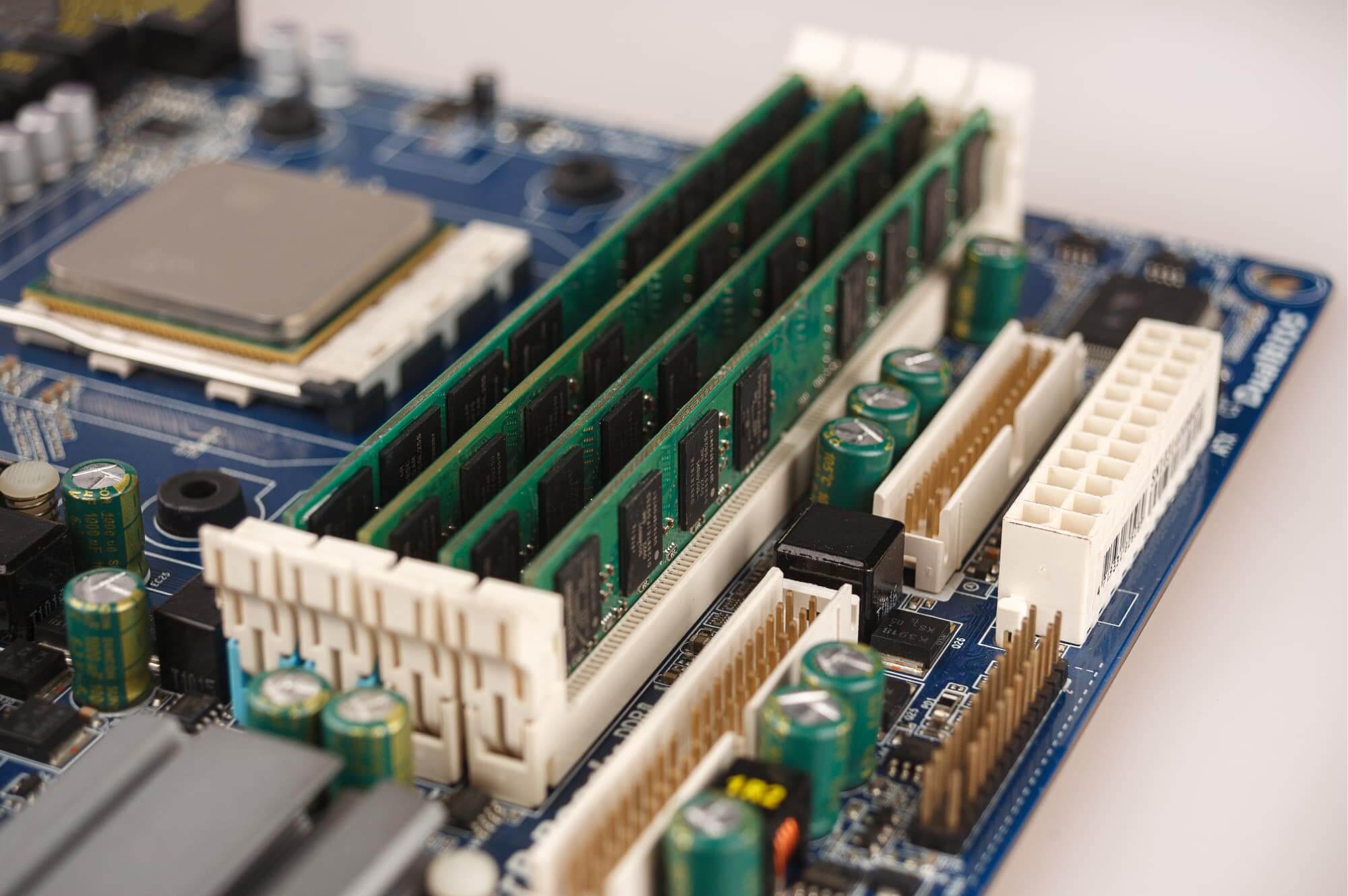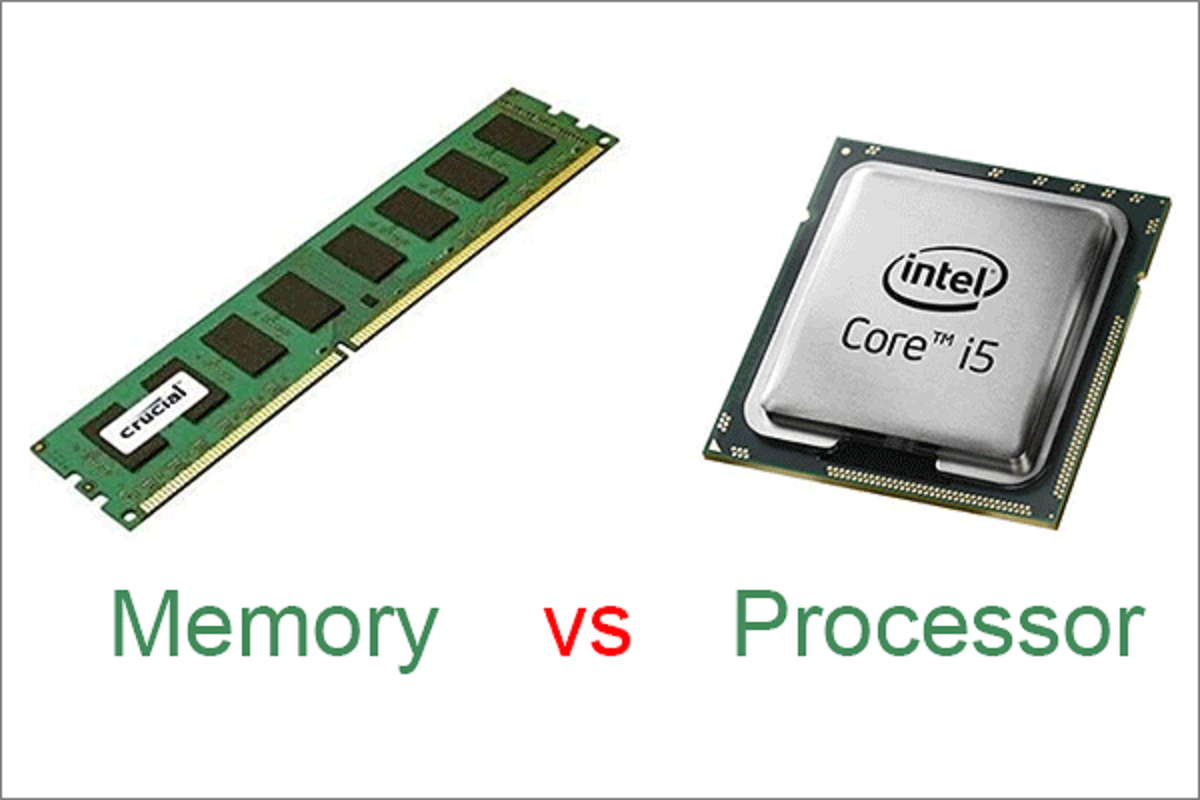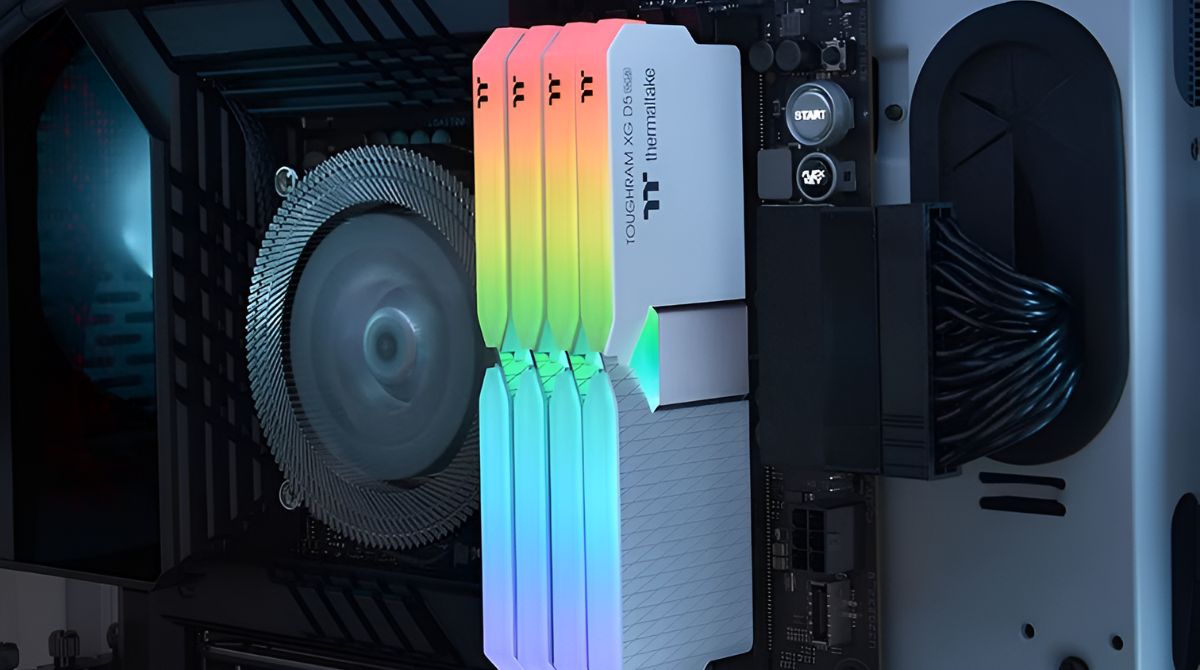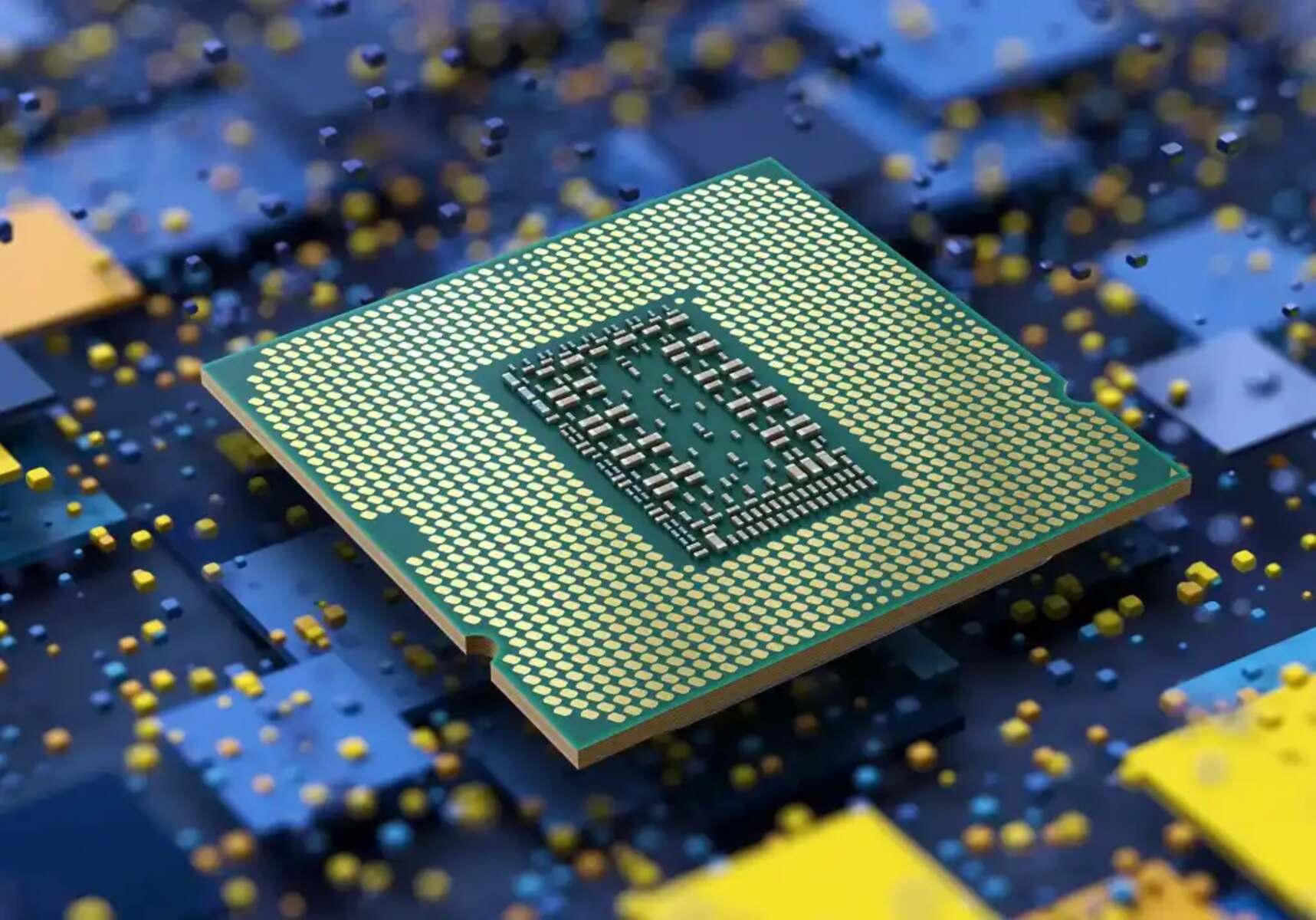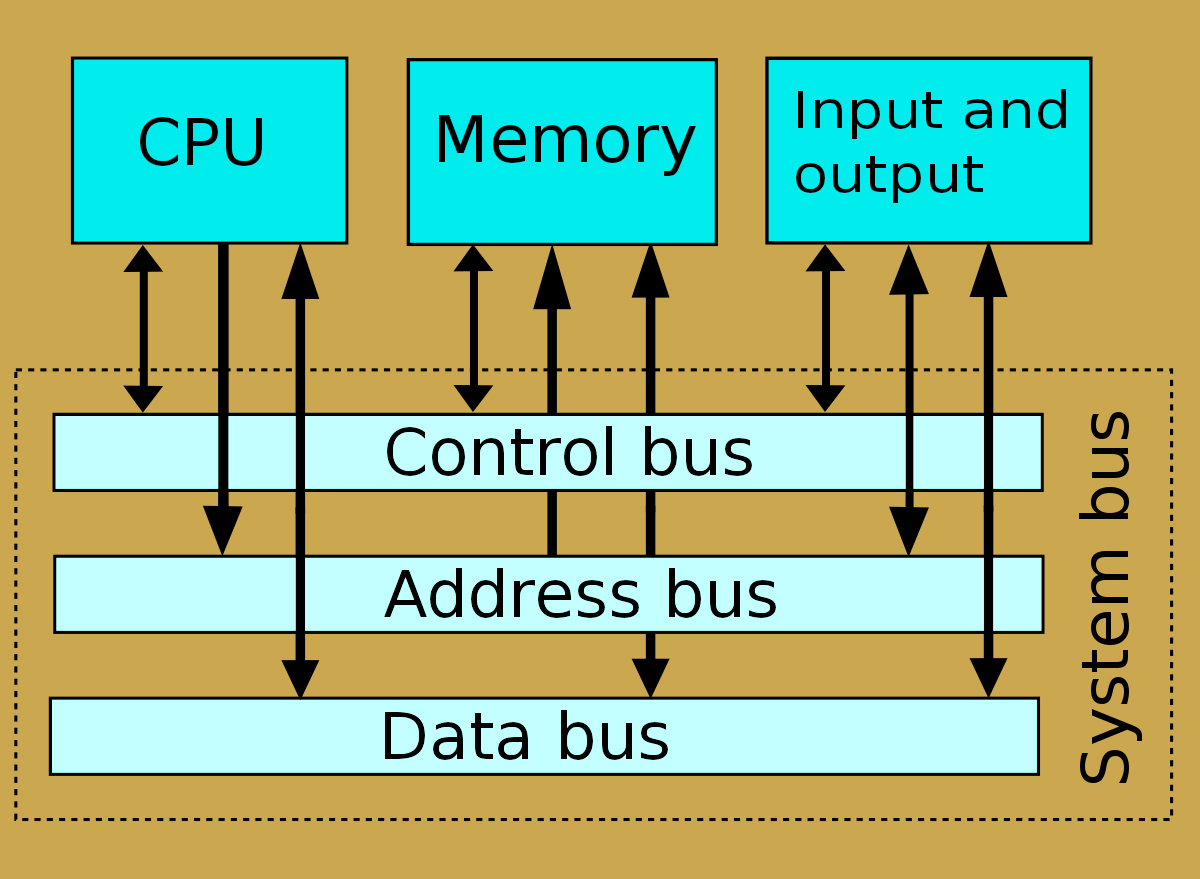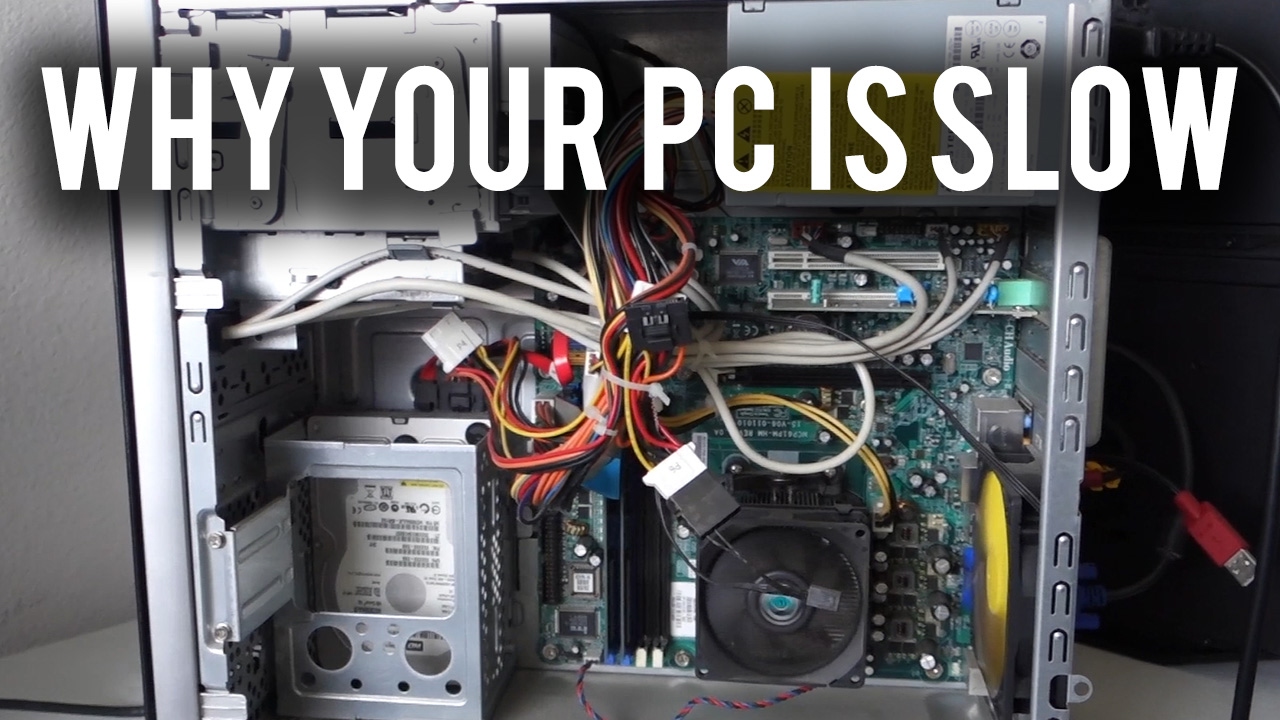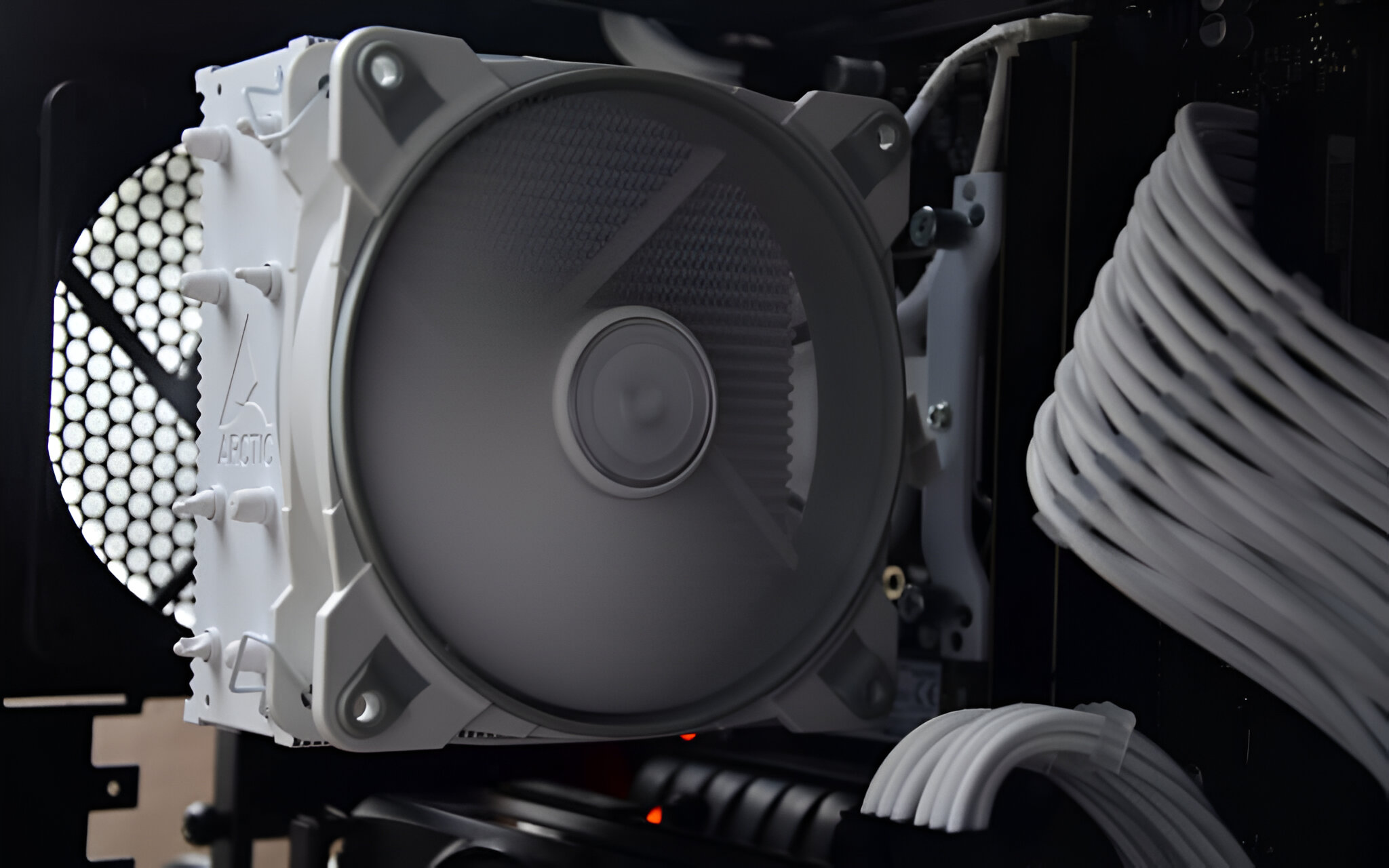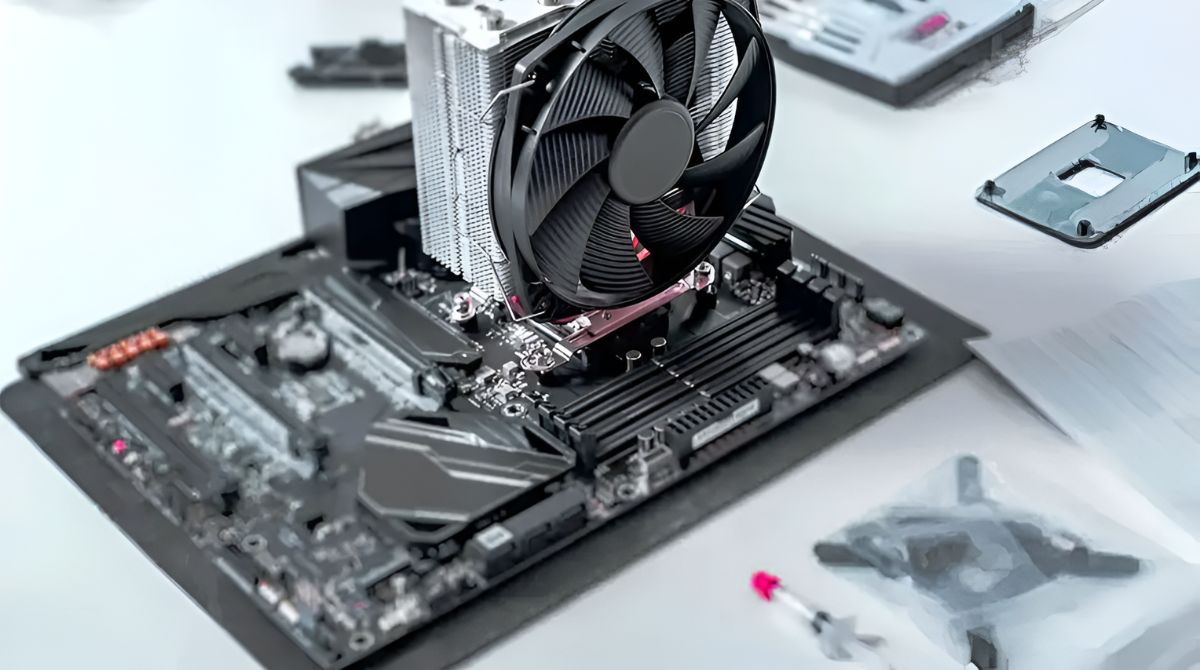Introduction
A computer system is made up of various components that work together to perform tasks and execute instructions. Among these components, two crucial elements are the Central Processing Unit (CPU) and Random Access Memory (RAM). The CPU and RAM play significant roles in the overall performance and functionality of a computer.
Understanding the functions and capabilities of the CPU and RAM is essential for anyone seeking to delve into the world of computers. This article aims to provide a comprehensive overview of these essential components.
The CPU, often referred to as the “brain” of the computer, is responsible for executing instructions and carrying out calculations. It performs a wide range of tasks, from handling basic arithmetic operations to complex data processing. On the other hand, RAM acts as the computer’s short-term memory, storing information that the CPU can quickly access and use during operations.
In order to grasp the significance of the CPU and RAM, it’s important to understand their individual functions and the different types available in the market. This article will delve into the details of each component, exploring their features, capabilities, and how they interact with other parts of the computer system.
By the end of this article, readers will have a thorough understanding of the CPU and RAM, enabling them to make informed choices when it comes to upgrading or purchasing a computer. So let’s dive in and explore the world of CPU and RAM, and how they power our digital experiences.
Definition of CPU
The Central Processing Unit (CPU) is the primary component of a computer system responsible for executing instructions and carrying out operations. It is often referred to as the “brain” of the computer because it controls and coordinates all the activities of the system.
The CPU is a complex electronic circuit comprised of several key components, including the arithmetic logic unit (ALU), control unit, and registers. The ALU performs mathematical computations, such as addition and subtraction, while the control unit manages the flow of instructions and data within the CPU.
The CPU receives instructions from the computer’s memory, decodes them, and executes the necessary operations. It acts as the bridge between the software and hardware of a computer, translating high-level instructions into low-level machine language that can be understood by the computer’s internal components.
One of the most important features of the CPU is its clock speed, which is measured in gigahertz (GHz). The clock speed determines the number of instructions the CPU can execute per second. A higher clock speed generally indicates a faster and more powerful CPU.
CPU performance is not solely determined by clock speed, as factors such as cache size, number of cores, and microarchitecture also play crucial roles. Cache memory is a small high-speed memory located within the CPU, which stores frequently accessed data and instructions for faster processing. The number of cores refers to the individual processing units within the CPU, allowing for parallel execution of multiple tasks.
The CPU is a vital component in any computer system, whether it’s a desktop, laptop, or mobile device. Its capabilities and performance have a direct impact on the overall speed, efficiency, and responsiveness of the system. As technology continues to advance, CPUs are constantly evolving to provide better performance, energy efficiency, and support for emerging technologies.
Functions of CPU
The CPU performs several essential functions that are crucial for the operation and functionality of a computer system. Let’s explore some of the key functions of the CPU:
1. Instruction Execution: The CPU receives instructions from the computer’s memory, decodes them, and performs the necessary operations. It executes a wide range of instructions, including arithmetic and logic operations, data movement, and control flow instructions.
2. Arithmetic and Logic Operations: The Arithmetic Logic Unit (ALU) within the CPU carries out mathematical computations such as addition, subtraction, multiplication, and division. It also performs logical operations like comparing values, checking conditions, and determining the outcome of logical expressions.
3. Data Processing: The CPU processes large amounts of data by manipulating, transforming, and analyzing it according to the instructions given. This data processing capability is crucial for tasks such as data analysis, simulation, scientific calculations, and multimedia rendering.
4. Control Unit: The control unit of the CPU manages the flow of instructions and data within the CPU. It coordinates the operations of other components, such as memory, input/output devices, and the ALU. The control unit ensures that instructions are executed in the correct sequence and that data is transferred to the appropriate locations.
5. Fetch-Decode-Execute Cycle: The CPU follows a series of steps known as the fetch-decode-execute cycle. It fetches instructions from memory, decodes them to determine the required operation, and then executes the operation to produce the desired outcome. This cycle repeats continuously, enabling the CPU to execute multiple instructions in sequence.
6. Interrupt Handling: The CPU is responsible for handling interrupts, which are signals that can pause the execution of the current instruction to handle more urgent tasks. Interrupts can be generated by hardware devices, software requests, or external events. The CPU suspends its current operation, saves the current state, and performs the interrupt service routine before returning to the normal execution flow.
7. Virtual Memory Management: The CPU manages the virtual memory system, which allows a computer to use more memory than physically available. It controls the mapping of virtual addresses to physical memory addresses, ensuring efficient utilization of memory resources and providing a seamless experience for users.
These functions collectively enable the CPU to process instructions, perform calculations, manage data, and control the overall operation of the computer system. The efficiency and performance of the CPU directly impact the speed, responsiveness, and multitasking capabilities of the computer.
Different types of CPUs
The world of CPUs offers a variety of options, each tailored to specific computing needs. Let’s explore some of the different types of CPUs:
1. Single-Core CPU: This type of CPU has a single processing core, capable of executing one instruction at a time. While single-core CPUs are less powerful compared to multi-core processors, they can still handle basic computing tasks efficiently.
2. Multi-Core CPU: Multi-core CPUs feature multiple processing cores on a single chip. Each core can handle separate instructions simultaneously, allowing for parallel processing. Multi-core CPUs deliver improved performance and are particularly beneficial for multitasking, running multiple applications, and handling resource-intensive tasks.
3. Dual-Core CPU: A dual-core CPU contains two separate cores on a single chip. This configuration offers better performance than single-core CPUs, as it can handle more instructions simultaneously. Dual-core CPUs are commonly found in laptops and entry-level desktop computers.
4. Quad-Core CPU: Quad-core CPUs have four processing cores on a single chip, offering even greater multitasking capabilities and processing power. They are suitable for tasks that require extensive processing, such as video editing, 3D rendering, and gaming.
5. Hexa-Core CPU: Hexa-core CPUs feature six processing cores and provide an additional boost in performance compared to quad-core CPUs. They excel in handling heavy workloads and resource-demanding applications.
6. Octa-Core CPU: Octa-core CPUs boast eight processing cores, delivering exceptional performance in demanding tasks. They are often found in high-end desktop computers and servers that require substantial processing power.
7. Mobile CPUs: Mobile CPUs are designed specifically for smartphones, tablets, and other portable devices. They prioritize power efficiency and performance optimization to provide a balance between processing power and battery life.
8. Server CPUs: Server CPUs are specially designed for data centers and server environments. They are optimized for handling heavy workloads, supporting multiple users, and delivering high levels of performance, reliability, and scalability.
It’s important to choose a CPU that aligns with your specific computing requirements. Consider factors such as the type of applications you’ll be running, the level of multitasking you’ll need, and your budget. Consulting with experts or doing thorough research can help you make an informed decision when selecting the right CPU for your needs.
Definition of RAM
Random Access Memory (RAM) is a crucial component of a computer system that provides temporary storage for data and instructions that the CPU needs for immediate access. It is often referred to as the computer’s short-term memory or working memory.
RAM is composed of electronic circuits and memory modules that can quickly read and write data. Unlike permanent storage options like hard drives or solid-state drives, RAM is volatile, meaning its contents are lost when the computer is powered off.
The primary function of RAM is to store data that the CPU can readily access, allowing for faster and more efficient processing. When the CPU needs to execute an instruction or retrieve specific data, it checks if the data is present in the RAM. If it is, the CPU can retrieve it much faster than if it had to access it from a slower storage medium like a hard drive.
RAM acts as a bridge between the CPU and other storage devices, facilitating the transfer of data and instructions. It provides a high-speed working space for the CPU, allowing for quick access and manipulation of data during the execution of programs and tasks.
Another important aspect of RAM is its capacity, which refers to the amount of data it can store at any given time. Higher capacity RAM allows for the storage of larger amounts of data and can support more memory-intensive applications and processes.
RAM operates at a much higher speed compared to storage devices like hard drives or solid-state drives. This speed is measured in megahertz (MHz) or gigahertz (GHz) and impacts the overall performance and responsiveness of the computer system. Faster RAM enables the CPU to access and process data more quickly, resulting in smoother multitasking, faster application loading times, and improved overall system performance.
It is worth noting that when choosing RAM, compatibility with the motherboard is essential. Different motherboards support specific types and speeds of RAM, so it is important to ensure that the chosen RAM is compatible with your system.
In summary, RAM is a temporary storage component that plays a crucial role in providing fast access to data and instructions that the CPU needs. It enhances the performance and responsiveness of a computer system, allowing for smoother multitasking and efficient execution of programs and tasks.
Functions of RAM
Random Access Memory (RAM) serves several important functions in a computer system. Let’s explore the key functions of RAM:
1. Data Storage: One of the primary functions of RAM is to temporarily store data that the CPU needs for immediate access. This includes program instructions, data files, and system processes. By storing data in RAM, the CPU can quickly retrieve and manipulate the data without relying on slower storage devices like hard drives.
2. Program Execution: When a program is executed, the instructions and required data are loaded into RAM. The CPU accesses these instructions and data from RAM, allowing for fast and efficient program execution. The larger the RAM capacity, the more programs and processes can be loaded and executed simultaneously.
3. Faster Access Speed: RAM provides significantly faster access speeds compared to other storage devices like hard drives or solid-state drives. This allows the CPU to quickly retrieve and process data, resulting in improved overall system performance and responsiveness.
4. Multitasking: RAM plays a vital role in multitasking, which is the ability to run multiple applications and processes simultaneously. As each program and its associated data are loaded into RAM, the CPU can quickly switch between different tasks, providing a seamless multitasking experience without significant performance degradation.
5. Virtual Memory Management: RAM also plays a crucial role in the management of virtual memory. Virtual memory is a technique that allows the computer to use a portion of the hard drive as an extension of the RAM. When the available physical RAM fills up, the CPU can offload less frequently accessed data from RAM to the hard drive, making room for more frequently accessed data. This enables the system to handle larger amounts of data and run memory-intensive programs even if the physical RAM capacity is limited.
6. Caching: RAM serves as a cache for frequently accessed data. Programs and files that are accessed frequently are stored in RAM, allowing for faster retrieval and execution. Caching helps to optimize system performance by reducing the time it takes to access frequently used data.
7. Temporary Storage: As RAM is a volatile memory, its contents are cleared when the computer is powered off or restarted. This makes it an ideal temporary storage medium for processes and data that do not need to be permanently saved. Once the computer is rebooted, RAM is ready to receive new data and instructions.
Overall, RAM plays a critical role in enhancing the performance and functionality of a computer system. By providing fast and temporary storage for data and instructions, RAM enables the CPU to efficiently execute programs, facilitate multitasking, and deliver a responsive computing experience.
Different types of RAM
Random Access Memory (RAM) comes in various types, each offering different characteristics and performance capabilities. Let’s explore some of the different types of RAM:
1. Dynamic RAM (DRAM): DRAM is the most common type of RAM found in computer systems. It stores each bit of data in a separate memory cell within the integrated circuit. DRAM requires constant refreshing of data to maintain its contents, which can result in slower access times compared to other types of RAM. However, it offers a higher storage capacity and is more cost-effective.
2. Synchronous DRAM (SDRAM): SDRAM is an improved version of DRAM that synchronizes with the computer’s system bus. It operates at a specific clock speed, allowing for faster and more efficient data transfers. SDRAM has become the standard type of RAM in most computer systems due to its enhanced performance and compatibility.
3. Double Data Rate (DDR) SDRAM: DDR SDRAM is a further advancement of SDRAM, offering higher data transfer rates. DDR RAM transfers data on both the rising and falling edges of the clock signal, effectively doubling the data transfer speed compared to regular SDRAM. Different generations of DDR RAM, such as DDR2, DDR3, and DDR4, have been developed over the years, each offering increased transfer rates and improved performance.
4. Graphics Double Data Rate (GDDR) RAM: GDDR RAM is specifically designed for graphics processing units (GPUs) and is commonly used in graphics cards. It provides high bandwidth and fast access speeds to support the demanding requirements of rendering graphics, textures, and video data.
5. Static RAM (SRAM): SRAM is a type of RAM that uses flip-flop circuitry to store each bit of data. Unlike DRAM, it does not require constant refreshing and offers faster access times. SRAM is commonly used as cache memory due to its speed and reliability, but it is more expensive and has lower storage capacity compared to DRAM.
6. Non-Volatile RAM: Non-volatile RAM (NVRAM) retains its data even when the computer is powered off. Examples of NVRAM include Flash memory and Ferroelectric RAM (FeRAM). Flash memory is commonly used for storage devices like USB drives and solid-state drives, while FeRAM offers faster access times but lower storage capacity compared to other types of RAM.
7. Registered RAM (Buffered RAM): Registered RAM, also known as buffered RAM, includes a register between the RAM modules and the memory controller. This register helps reduce electrical load and timing issues in systems with large amounts of RAM, allowing for better stability and performance.
The choice of RAM depends on the compatibility with the motherboard, the specific needs of the computer system, and the desired performance level. Factors such as capacity, speed, and cost must be considered when selecting the appropriate type of RAM for a particular application or computing environment.
Comparison between CPU and RAM
The CPU (Central Processing Unit) and RAM (Random Access Memory) are both essential components of a computer system, each serving distinct functions. Let’s compare these two key components:
Function: The CPU is responsible for executing instructions and carrying out operations, while RAM provides temporary storage for data and instructions that the CPU needs immediate access to.
Role: The CPU acts as the “brain” of the computer, controlling and coordinating all activities. It performs calculations, manages data, and executes instructions. RAM serves as the computer’s short-term memory, storing data that the CPU can quickly access and manipulate.
Processing Power: The CPU’s processing power is determined by factors such as clock speed, cache size, and number of cores. Higher clock speeds and larger caches result in faster processing, and multiple cores allow for parallel execution of tasks. On the other hand, RAM’s performance is influenced by its capacity and speed, with higher capacities and faster speeds enabling the CPU to access and process data more quickly.
Storage Capacity: The CPU does not provide storage capacity for data. It can only hold a limited amount of data within its internal registers. In contrast, RAM provides temporary storage and has a much larger capacity, allowing for the storage of various data and program instructions during system operation.
Data Access: The CPU retrieves and processes data from RAM during program execution. The frequency and efficiency of data access can impact overall system performance. A CPU with a larger cache can store frequently accessed data, reducing the need to fetch data from RAM repeatedly.
Data Persistence: CPU operations are temporary and volatile. Data processed by the CPU is not permanently stored unless written to a storage device. In contrast, data temporarily stored in RAM is lost once the computer is powered off or restarted. Data that needs to be retained long-term should be stored on permanent storage devices like hard drives or solid-state drives.
Upgrade Options: Upgrading the CPU usually involves replacing the entire chip, which can be a complex and costly process. Conversely, upgrading RAM is relatively straightforward, as it often involves adding or replacing RAM modules without needing to replace the CPU.
Impact on System Performance: Both the CPU and RAM have a significant impact on system performance. A powerful CPU with sufficient RAM allows for faster and more efficient program execution, multitasking, and overall system responsiveness.
Balance and Optimization: Achieving a balance between the CPU and RAM is crucial for optimal system performance. A powerful CPU without sufficient RAM may lead to performance bottlenecks, while ample RAM with a slower CPU may result in underutilization of memory resources.
In summary, the CPU and RAM are integral components of a computer system. The CPU handles computation and instruction execution, while RAM provides temporary storage for data. Both components work in conjunction to determine the overall performance, speed, and functionality of a computer.
Conclusion
The Central Processing Unit (CPU) and Random Access Memory (RAM) are crucial components that work together to power a computer system. The CPU serves as the “brain” of the system, executing instructions and carrying out operations, while RAM provides temporary storage for data and instructions that the CPU needs immediate access to.
The CPU’s performance is influenced by factors such as clock speed, cache size, and the number of cores. A faster CPU with a larger cache and multiple cores enables efficient execution of tasks, ensuring smooth multitasking and faster program execution.
RAM plays a vital role in the overall performance and functionality of a computer system. It provides a high-speed working space for the CPU, allowing for quick access and manipulation of data. The capacity and speed of RAM impact how much data can be stored and how quickly it can be accessed, ultimately influencing system responsiveness and multitasking capabilities.
Choosing the right CPU and RAM combination is crucial for optimal system performance. These components must be balanced to avoid bottlenecks and ensure efficient utilization of system resources. It’s important to consider factors such as the specific computing needs, budget constraints, and compatibility with the motherboard when making these decisions.
As technology continues to advance, CPUs and RAM are constantly evolving to meet the increasing demands of modern computing. The market offers a variety of options, from single-core to multi-core processors, and different types of RAM with varying capacities and speeds.
By understanding the functions, features, and types of CPUs and RAM, individuals can make informed decisions when upgrading or purchasing a computer system. The right combination of CPU and RAM can significantly enhance system performance, enabling smoother multitasking, faster program execution, and an overall improved computing experience.







